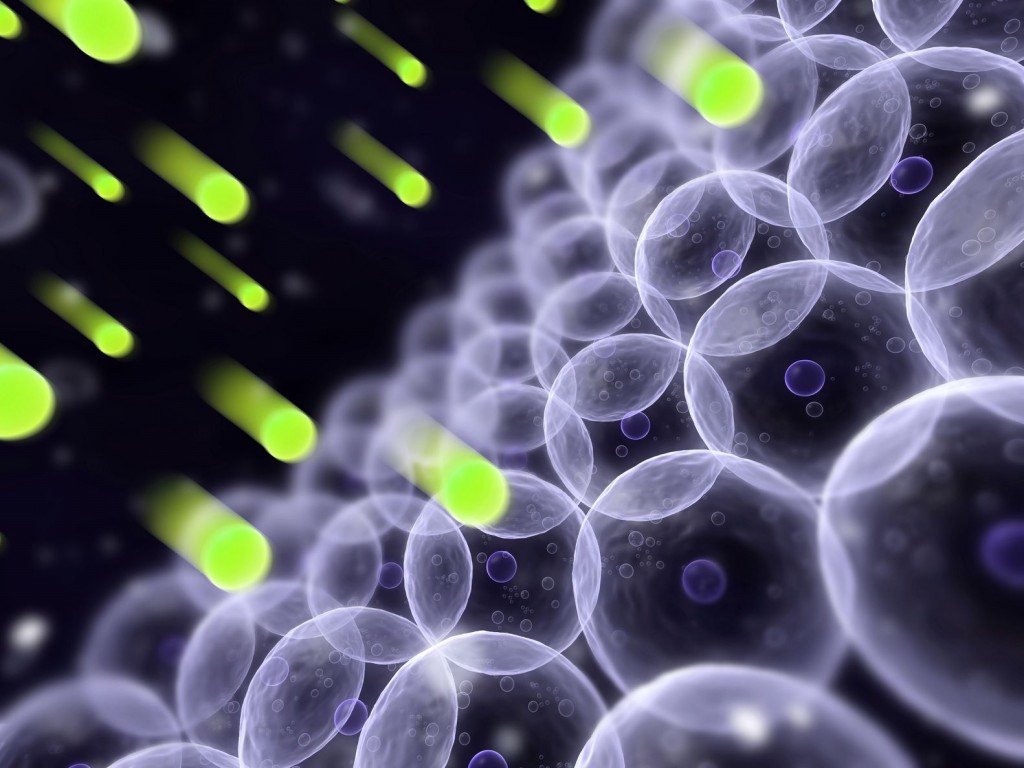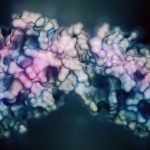Jacob Schor, ND
When Alexander Bell invented the telephone in 1885 he created an enormous problem. America was still segregated by social class. One did not talk to one’s betters, and there was no correct greeting to use in addressing an unknown person, potentially of a different class. Ringing phones were better left unanswered. Bell proposed answering the phone by shouting “Ahoy, Ahoy,” a greeting already in use on the high seas to address unknown persons. Thomas Edison made a proposal of his own, suggesting phones be answered with “Hello,” a derivation of the term Halloo that was already used to call out to a ferry operator across a river. Edison’s entry obviously has won out. New situations sometimes call for new vocabulary.
I bring up this story because it is time for us to find some new vocabulary. It is time to stop labeling substances as antioxidants: we need new and more descriptive terms.
I was taught that an antioxidant is a substance that prevents or slows the breakdown of another substance by oxygen. Nutrients such as beta-carotene, vitamin C, vitamin E, and selenium are the classic examples. They are supposed to scavenge free radicals, molecules with one or more unpaired electrons. Free radicals rapidly react with other molecules, starting chain reactions in a process called oxidation. Antioxidants stop this process. At least that is what Dr. Anna MacIntosh taught us once upon a time.
When it comes to cancer prevention or cancer treatment this antioxidant business gets interesting. Many of the things that trigger cancer do so by causing oxidative damage to healthy cells, hence the idea that antioxidants are protective against cancer. Many of the things that kill cancer cells do so by causing oxidative damage, and so we struggle with the straight medical world’s theory that antioxidants interfere with cancer treatment.
Forget the term antioxidant. What we really care about are two closely related things: chemicals that stimulate the generation of reactive oxygen species (ROS), and chemicals, such as glutathione, that quench ROS. High levels of ROS in an otherwise healthy body cause damage and are a risk factor for disease. We usually want to keep their levels under control, and cells accomplish this with glutathione. Yet in a body diseased with cancer, ROS are the main weapon to destroy cancer cells. In the medical world, chemo and radiation therapy are used to raise ROS. The point here is that sometimes we want to lower levels of ROS and sometimes we want to increase them. Sometimes we want more glutathione and sometimes we want to get less of it.
This reminds me of a story about Bob Dole. Back when he was campaigning for the presidency he appeared along with Bill Clinton for an interview. The interviewer asked Clinton what kind of underwear he wore, boxers or briefs.
“Boxers,” replied Clinton looking rather smug. The interviewer turned to Bob Dole and asked the same question.
“Depends,” responded Dole.
The substances we call antioxidants don’t always do what we want them to—it depends. Many classic antioxidant vitamins can do the opposite and actually stimulate the production of ROS in cancer cells.
In some studies, antioxidants work like one would expect: they decrease ROS (Mantovani, 2003), especially vitamin C, protecting cancer cells from death caused by treatment (Frank et al., 2006). But this is not always what happens.
A recent study suggests high-dose intravenous vitamin C kills cancer cells because it is converted into hydrogen peroxide, a potent free radical that kills cells (Science News, 2005). Vitamin C increases differentiation in hepatoma cells by increasing hydrogen peroxide (Zheng et al., 2002). What is vitamin C, our poster child of antioxidants, doing increasing hydrogen peroxide?
Selenium is another example. Selenium is always on that list of antioxidants we rattle off, you know, “Vitamins A, C, E, zinc, and selenium.” Yet in cancer cells, selenium stimulates apoptosis by generating ROS (Zhao et al., 2006).
The hormone melatonin is also typically described as an antioxidant, yet it too kills cancer cells by generating ROS (Buyukavci et al., 2006; Medina-Navarro et al., 1999). Curcumin as well induces apoptosis by generating ROS. Curcumin mediates ceramide generation via the de novo pathway in colon cancer cells (Moussavi et al., 2006). The story is similar with berberine in leukemia (Lin et al., 2006). The parthenolides found in feverfew also destroy cancer cells via ROS (Guzman et al., 2005). So does ellagic acid, the component thought to be the active ingredient in raspberries and pomegranates (Bhosle et al., 2005). Even vitamin D-3 acts by generating ROS (Ravid and Koren, 2003). (If you aren’t confused about antioxidants at this point then you haven’t been paying attention!)
There’s another side to this equation. N-acetyl-cysteine (NAC) can stop this cancer-destroying process. It stops vitamin K-3, vitamin C, feverfew, and probably other substances we once called antioxidants from killing cancer cells. NAC increases glutathione levels. What about glutathione? Let me digress a moment.
For years many of us encouraged cancer patients to increase their glutathione levels. Supplementation with NAC, straight glutathione, or glutathione in that patented combination with anthrocyanins was supposed to protect one’s healthy cells while targeting cancer cells. It’s time to forget those ideas. Glutathione stops ROS-generating therapies from killing cancer cells. It stops the parthenolides from killing cancer cells (Zhang et al., 2004). It stops vitamin K-3 from killing cancer cells. Vitamin K-3, by the way, especially in combination with vitamin C, has a bizarre effect on cancer cells, causing a unique form of cell death called autoschizis. Rather than dying via apoptosis, the K-3 and C combination convinces the cancer cell to slash itself (self-cutting), allowing the cell cytoplasm to bleed out. In contrast to this cellular hari-kari, apoptosis looks rather tame. The mechanism for vitamin K-3’s action appears to be generation of hydrogen peroxide (Lin et al., 2005). Now I discourage supplements that increase glutathione during cancer treatment. Glutathione shuts off autoschizis.
These days glutathione depletion in itself can be seen as a cancer treatment strategy or as one to be used along with substances that increases ROS. Glutathione depletion triggers apoptosis in prostate cancer cells (Coffey et al., 2000). Research suggests that depleting glutathione may increase the chemotherapy tumor kill in pancreatic (Schnelldorfer et al., 2000), melanoma (Pendyala et al., 1997), and colon cancers (Moussavi et al., 2006). The herb salvia, it turns out, stimulates apoptosis in cancer cells via glutathione depletion (Liu et al., 2001). NAC also stops salvia from killing cancer cells. Typically, say after surgery, we think of l-glutamine as being protective by maintaining glutathione, but in cancer cells it may do the opposite. In a recent study, a diet high in l-glutamine decreased glutathione and as a result was useful in killing cancer cells (Benlloch et al., 2006).
Forget the term antioxidant. It leads to generalizations that all too often aren’t true and don’t work. What these chemicals actually do inside a cell depends on the situation. Sometimes they quench free radicals like we were taught, and sometimes, especially it seems in cancer cells, they do the opposite and generate ROS. If vitamin C can raise hydrogen peroxide levels, how can you call it an antioxidant? This isn’t something easily explained to either a patient or the patient’s oncologist.
Instead let’s think and talk in terms of what a substance actually does, in a healthy cell or in a diseased cell. Does it generate or induce the production of ROS? If yes, call it an ROS inducer. If it lowers the amount of ROS then call it an ROS quencher. Let’s do the same for glutathione. Call it either a glutathione inducer or a glutathione depleter. These are the functions we need to track, so let’s use terms that are descriptive. Calling something an antioxidant doesn’t tell us what it does in the cell. It doesn’t tell us what we really need to know.
References
Benlloch M et al: Bcl-2 and Mn-SOD antisense oligodeoxynucleotides and a glutamine-enriched diet facilitate elimination of highly resistant B16 melanoma cells by tumor necrosis factor-alpha and chemotherapy, J Biol Chem 281(1):69-79, 2006.
Bhosle SM et al: Enhancement of radiation-induced oxidative stress and cytotoxicity in tumor cells by ellagic acid, Clin Chim Acta 359(1-2):89-100, 2005.
Buyukavci M et al: Melatonin cytotoxicity in human leukemia cells: relation with its pro-oxidant effect, Fundam Clin Pharmacol 20(1):73-9, 206.
Coffey RN et al: Thiol-mediated apoptosis in prostate carcinoma cells, Cancer 88(9):2092-104, 2000.
Frank J et al: Ascorbic acid suppresses cell death in rat DS-sarcoma cancer cells induced by 5-aminolevulinic acid-based photodynamic therapy, Free Radic Biol Med 40(5):827-36, 2006.
Guzman ML et al: The sesquiterpene lactone parthenolide induces apoptosis of human acute myelogenous leukemia stem and progenitor cells, Blood 105(11):4163-9, 2005.
Lin C et al: Vitamin K3 triggers human leukemia cell death through hydrogen peroxide generation and histone hyperacetylation, Pharmazie 60(10):765-71, 2005.
Lin CC et al: Apoptosis of human leukemia HL-60 cells and murine leukemia WEHI-3 cells induced by berberine through the activation of caspase-3, Anticancer Res 26(1A):227-42, 2006.
Liu J et al: Role of intracellular thiol depletion, mitochondrial dysfunction and reactive oxygen species in Salvia miltiorrhiza-induced apoptosis in human hepatoma HepG2 cells, Life Sci 69(16):1833-50, 2001.
Mantovani G: Reactive oxygen species, antioxidant mechanisms, and serum cytokine levels in cancer patients: impact of an antioxidant treatment, J Environ Pathol Toxicol Oncol 22(1):17-28, 2003.
Medina-Navarro R et al: Pro-oxidating properties of melatonin in the in vitro interaction with the singlet oxygen, Endocr Res 25(3-4):263-80, 1999.
Moussavi M et al: Curcumin mediates ceramide generation via the de novo pathway in colon cancer cells, Carcinogenesis Feb 25, 2006 [Epub ahead of print].
Moussavi M et al: Curcumin mediates ceramide generation via the de novo pathway in colon cancer cells, Carcinogenesis Feb 25, 2006 [Epub ahead of print].
Pendyala L et al: Effect of glutathione depletion on the cytotoxicity of cisplatin and iproplatin in a human melanoma cell line, Cancer Chemother Pharmacol 40(1):38-44, 1997.
Ravid A, Koren R: The role of reactive oxygen species in the anticancer activity of vitamin D, Recent Results Cancer Res 164:357-67, 2003.
Schnelldorfer T et al: Glutathione depletion causes cell growth inhibition and enhanced apoptosis in pancreatic cancer cells, Cancer 89(7):1440-7, 2000.
Science News October 15;168: 253, 2005.
Zhang S et al: Critical roles of intracellular thiols and calcium in parthenolide-induced apoptosis in human colorectal cancer cells, Cancer Lett 208(2):143-53, 2004.
Zhao R et al: Expression of p53 enhances selenite-induced superoxide production and apoptosis in human prostate cancer cells, Cancer Res 66(4):2296-304, 2006.
Zheng QS et al: Ascorbic acid induces redifferentiation and growth inhibition in human hepatoma cells by increasing endogenous hydrogen peroxide, Pharmazie 57(11):753-7, 2002.
 Dr. Jacob Schor is a 1991 graduate of National College of Naturopathic Medicine and has practiced in Denver for the past 14 years. He served as president of the Colorado Association of Naturopathic Physicians (CANP) from 1992 to 2000 and continues to serve as legislative chair for the organization. He is in practice with his wife Rena Bloom, ND, current CANP president, at the Denver Naturopathic Clinic. Contact: [email protected]
Dr. Jacob Schor is a 1991 graduate of National College of Naturopathic Medicine and has practiced in Denver for the past 14 years. He served as president of the Colorado Association of Naturopathic Physicians (CANP) from 1992 to 2000 and continues to serve as legislative chair for the organization. He is in practice with his wife Rena Bloom, ND, current CANP president, at the Denver Naturopathic Clinic. Contact: [email protected]





